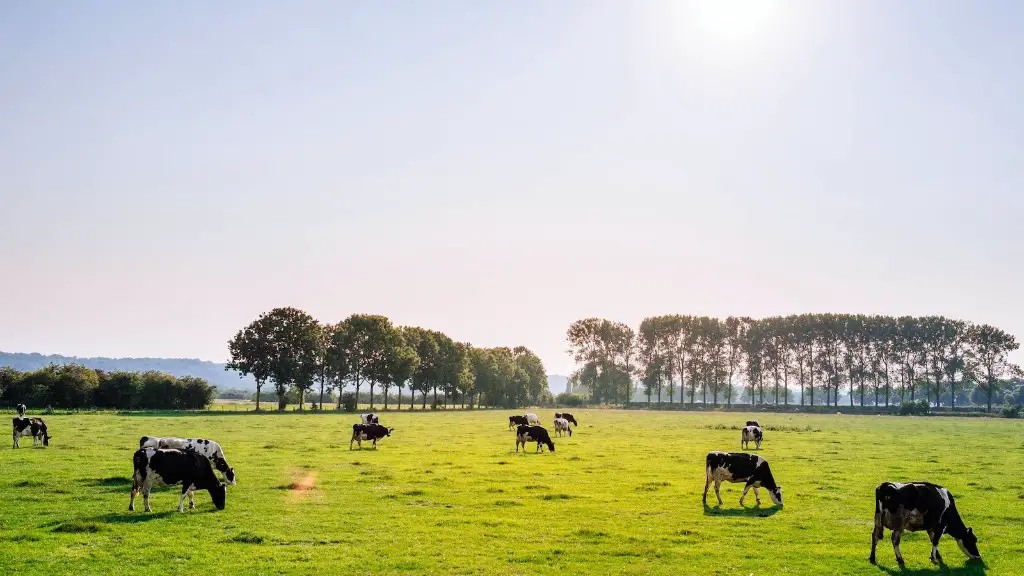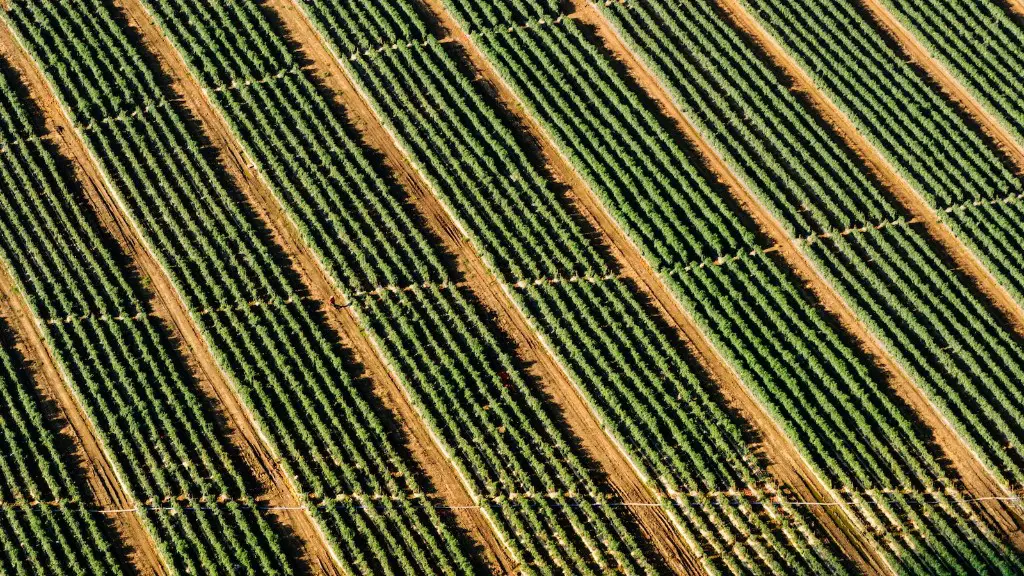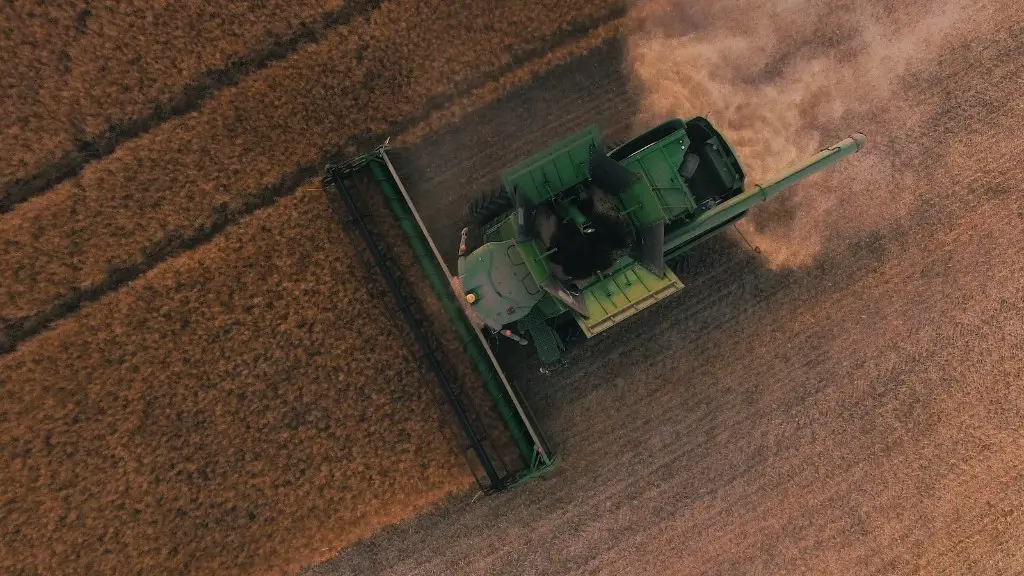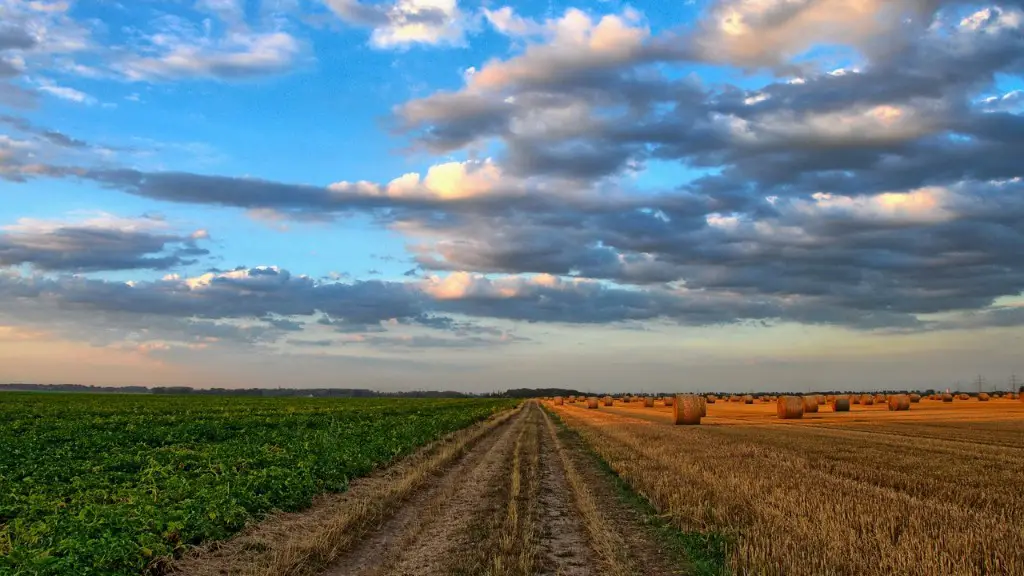Historically, agriculture has been defined by the use of animals and manual labor to grow crops. However, with the advent of new technology, this process has changed dramatically. Today, agricultural machines and equipment can plant, harvest, and process food much faster and more efficiently than ever before. In addition, technology has also allowed for the development of new methods of food production, such as aquaculture and hydroponics. As a result, the agriculture industry has been able to meet the demands of a growing population while also reducing its impact on the environment.
The advent of technology has changed the face of agriculture significantly. Farmers now have access to a wealth of resources and information that can help them improve their yields and farm more efficiently. GPS-guided machinery, for instance, helps farmers plant and harvest their crops with greater accuracy, while precision irrigation systems help them optimize water usage. In addition, technology has also played a role in making livestock more productive. For example, the use of genetic engineering has helped farmers create animals that are better able to resist disease and produce more milk or meat.
How did technological developments affect agriculture?
The advances in machinery have helped the farmers to cultivate more land and also to increase their yields. The seed, irrigation and fertilizers have also been improved to help the farmers.
The use of automated machines has transformed the way farmers cultivate their crops. Farmers can now use machines to harvest, weed, and seed their crops, which has made farming more efficient and easier.
What is a positive impact of technology in agriculture
Precision in the fields of agriculture is very important. Farmers use science and technology to collect data, analyze efficiency, monitor growth and quality, and more to save money and get better yields. This precision is important in order to have a successful harvest.
Labor and mechanization have had a significant impact on how farmers raise crops and care for livestock. Tractors, planters, and combines are much larger and efficient, and this has helped farmers to increase production and reduce labor costs.
What are 5 examples of technologies used in agriculture?
There are many new technologies emerging in the field of agriculture. Here are the top 5 newest technologies that are making an impact:
1. GIS software and GPS agriculture: This technology is helping farmers to map out their fields and track the data of their crops.
2. Satellite imagery: This technology is providing farmers with high-resolution images of their crops, which helps them to monitor the health of their plants.
3. Drone and other aerial imagery: This technology is giving farmers a new perspective of their crops, and helping them to identify problems areas.
4. Farming software and online data: This technology is helping farmers to keep track of their crops and soil data, and to make better decisions about their farming practices.
5. Merging datasets: This technology is allowing farmers to combine different data sources, such as weather data, to get a more complete picture of their crops and how they are growing.
Agriculture is constantly evolving and new technologies are emerging all the time that aim to make the industry more efficient and productive. Here are seven of the most promising new technologies that are currently being developed and implemented in the agriculture sector.
Soil and Water Sensors: Sensors that are able to measure various soil and water parameters (such as moisture content, pH, etc.) in real-time can be extremely helpful for farmers in managing their crops. This information can help them make more informed decisions about irrigation, fertilization, and other important agricultural practices.
Weather Tracking: Being able to track weather patterns can help farmers better prepare for extreme weather events, such as storms or droughts. By knowing what to expect, they can take steps to protect their crops and minimize losses.
Satellite Imaging: Satellite imagery can be used to detect crop stress, assess crop yields, and track soil moisture levels. This information can be extremely valuable for farmers in planning their activities and making decisions about their crops.
Pervasive Automation: Automation is becoming increasingly common in agriculture, with many tasks (such as planting, harvesting, and applying fertilizer) being carried out by machines. This trend is likely to continue as technology advances and more jobs
What are 3 important inventions that improved agriculture?
Farmers have been using machines to help them harvest crops and produce food for centuries. The reaper was invented in the early 1800s and was used to harvest small grains by cutting them with a blade. The thresher was invented in the mid-1800s and was used to remove kernels from the straw by beating them with a hammer. The steam engine was invented in the late 1800s and was used to power the thresher. The combine was invented in the early 1900s and was used to harvest and thresh grain at the same time. The automobile was invented in the early 1900s and was used to power the combine. The tractor was invented in the early 1900s and was used to power the thresher and the combine. Hydraulics were invented in the early 1900s and were used to power the tractor.
Technology has had a positive effect on society by providing higher standards of security for organizations, safer management of money, faster and easier data retrieval, improved and more effective advertising options, and easier access to education. It has also simplified everyday life by making many tasks easier to accomplish.
What are 3 positive impacts of technology
Technology has been a great help in staying connected, working from home, and having access to medical services in these challenging times. Expanded security, enhanced communication, increased information, education, and amusement are vital aspects of technology.
Technology has played a big role in shaping the world as it is today. It has made our lives easier and more comfortable in many ways. Here are some of the advantages of technology:
1. Production expansion: The technology allows for multiple-fold increases in production. This means that more goods and services can be produced in a shorter time, which can lead to lower prices and improved standards of living.
2. Time management: Technology enhances services and saves time. For example, online banking and shopping save us a lot of time and effort.
3. Easy and quick communication: Technology has reduced the world to a global village. We can communicate with anyone, anywhere in the world in a matter of seconds.
4. Reduces online fraud and cybercrime: With the advent of technology, many security measures have been put in place to reduce online fraud and cybercrime.
5. Has increased people’s safety: Technology has improved our safety in many ways. For instance, we can now use GPS to track our loved ones, and there are many apps that can help us stay safe while travelling.
6. Improved storage: Technology has improved storage capacity and efficiency. We can now store more information than ever before, and access
What two inventions changed agriculture?
Deere’s steel plow and McCormick’s mechanical reaper were both important inventions that helped to increase the efficiency of farmers. The steel plow was able to break up the hard soil of western states, while the mechanical reaper allowed farmers to harvest crops mechanically instead of by hand. These inventions helped to make farming more efficient and productive.
soil data Innovative agriculture 5 tech innovations in agriculture 1. Data preserved in soil: In order to help farmers better understand and manage their land, scientists are working on developing ways to store data in the soil itself. This would allow for a more detailed and accurate record of things like weather, plant growth, and soil health over time. 2. Innovative agriculture moving underground: In some parts of the world, space is limited, and so farmers are turning to innovative methods of growing crops underground. This can help to improve yield and water efficiency, and also has the added benefit of reducing the amount of land that needs to be used for agriculture. 3. Greens fed on rainbow waste: One way to reduce the amount of waste produced by agriculture is to feed it to greens, which can then be used as food for people or animals. This interesting idea is being explored by a number of companies and could help to reduce the amount of food waste produced each year. 4. Using the sun to generate freshwater: Agriculture is a thirsty business, and so a number of companies are exploring ways to use the sun to generate freshwater. This could help to reduce the amount of water used in agriculture, and also help to combat the effects of climate change. 5. Agriculture by aircraft: As
What modern technology is used for agriculture
Technology has had a profound impact on agriculture. It has affected every aspect of the agricultural process, from the way we grow our crops to the way we care for our animals. Technology has led to increased crop yields, more efficient methods of tilling and harvesting, and a reduction in the amount of manual labor required to produce food. It has also made it possible to create new strains of crops that are resistant to pests and diseases.
Drones are mostly used to monitor crops and spray fertilizers and pesticides. They are very small and unmanned aerial vehicles. They can help reduce the amount of labour required to grow a crop.
What are 2 things agricultural technology does?
Advanced devices, such as precision agriculture and robotic systems, allow businesses to be more profitable, efficient, safer, and more environmentally friendly. In addition, robotic technologies enable more reliable monitoring and management of natural resources, such as air and water quality.
Technology has a number of advantages that have made it an essential part of businesses today. The main advantages are that it can save time and improve efficiency. In addition, technology can help to reduce the risks of cybercrime. However, there are also some disadvantages to technology, such as the high cost and the dependence on it. There is also a risk that technology will lead to a shortage of jobs.
Final Words
Technology has drastically changed the agriculture industry. Farmers now have access to GPS technology, which helps them plan their crops and irrigation. They can also use drones to help with crop monitoring. Weather monitoring technology has also improved, which helps farmers predict weather patterns and forecast droughts.
Technology has changed the face of agriculture. Farmers now have access to a wide array of tools and information that can help them be more productive and efficient. GPS systems help farmers map their fields and track the yield of their crops. analysis software can help them to understand their data and make better decisions about crop rotation, irrigation, and seed selection. In short, technology has made it possible for farmers to produce more food with fewer resources.





